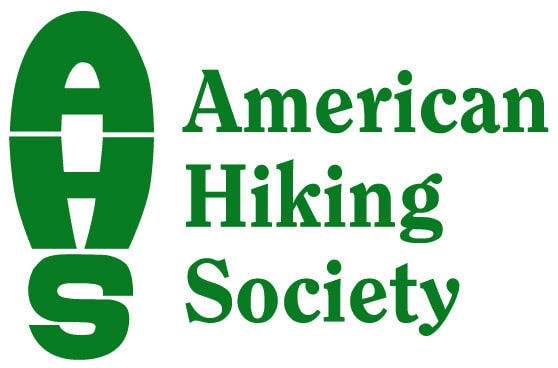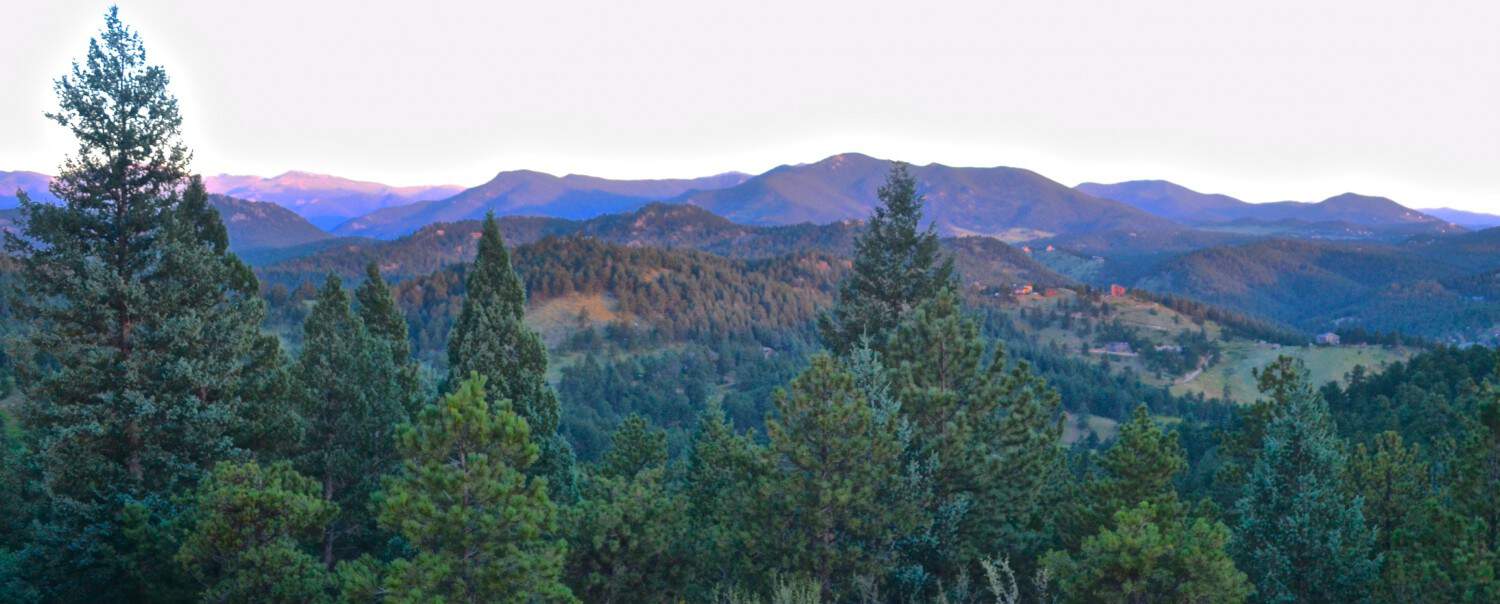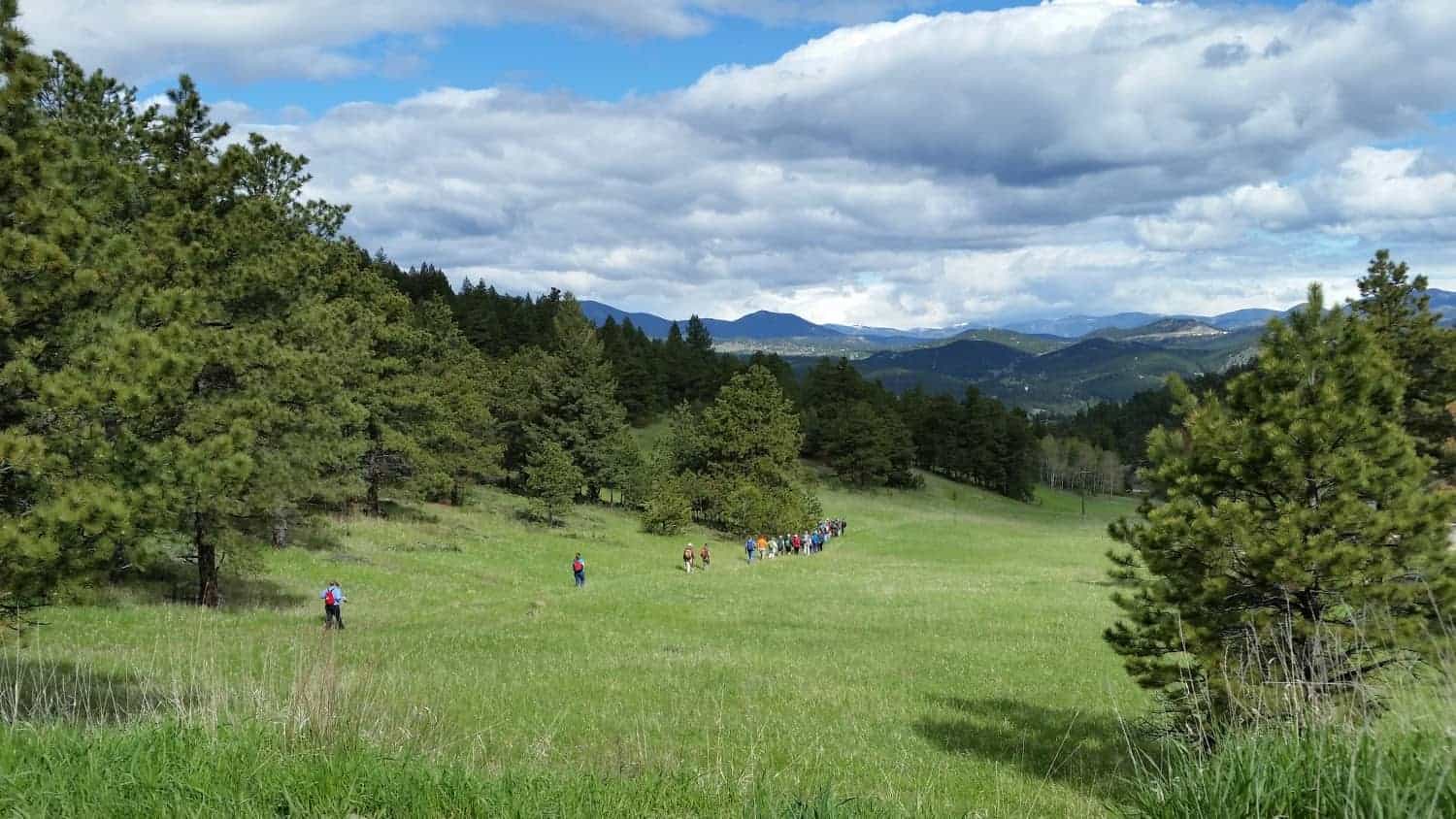Colorado – Volunteers for Outdoor Colorado
West Ridge Trail O’Fallon Park ‑ Denver Mountain Parks
Click here to go back to superiortrails.michelobultra.com to cast your vote!
Summary
Denver’s Mountain Parks (DMP), most within 20 miles of downtown, were built in the early 1900s, offering, then and now, scenic refuge and popular recreational destinations for city dwellers and tourists alike. To meet growing demands for sustainable trails within DMP, VOC will undertake a three‑day project involving 240 volunteers at O’Fallon Park, closing and restoring an historic eroded ranch road and constructing 3000 feet of new hiking trail along the park’s West Ridge Trail.
Project Description
Volunteers for Outdoor Colorado’s proposed project to build 3,000 feet of new hiking trail along the West Ridge Trail in O’Fallon Park west of Denver would make Martin O’Fallon proud. Arriving in Denver from Ireland in 1891, O’Fallon took a job as a janitor for $2.50 a week. Eight years later, he founded a plumbing supply company and within a decade he was doing well enough to afford a summer home at Grand Lake and to acquire valuable mountain ranch land immediately west of Denver. In 1938, O’Fallon donated his ranch property to the City of Denver, securing for generations to come what would become the last major land acquisition by the Denver Mountain Park system which had begun over 20 years before. O’Fallon’s donation completed the establishment of a park district linking two other Denver Mountain Parks – Corwina Park and Pence Park ‑‑ which were developed between 1914 and 1937. The Olmstead Plan for the Denver Mountain Parks had delineated the O’Fallon area as a top priority for acquisition and by the time it was secured in 1938, the Civilian Conservation Corps had already built a picnic site, a hiking trail, and Denver’s first sled run at nearby Corwina Park. It was an area to which city dwellers were already eagerly flocking with their families and friends, to escape the summer heat and
to play in winter’s deep snow.
Today, the three parks comprise 1,487 acres of contiguous parcels. The three parks are managed as one natural resource area, with a comprehensive and holistic management plan aimed at preserving and protecting the significant natural resources of all three parks. Most of the parks’ acreage is open space that protects and sustains the natural resources including wetlands, riparian forest, open meadows, watershed, and evergreen forests. Except for Pence, the parks lie directly along Bear Creek, attracting hundreds of weekend visitors, eager to splash and fish in mountain streams. O’Fallon and Corwina Parks each also have beautiful, distinct stone structures that define their character. Nearly three‑quarters of a century since Martin O’Fallon donated his ranch to establish the park, O’Fallon Park now has nearly 9 miles of trails, available mostly for hiking only, with some open to multi‑use. Although a number of these have been well‑built, the park has for many years used the original ranch roads for portions of its hiking trails. Many of these include steep sections that are prone to erosion, resulting in social trails crisscrossing mountain meadows throughout the park, further extending into the hillsides above the park’s most popular picnic sites. Braided trails also follow Bear Creek, and unintentional shortcuts have been created to more easily and speedily connect park users to the park’s designated trails. Although some of the designated trails are signed, in general there is no clear indication which trails are official. The lack of clear wayfinding diminishes the usability of the park and contributes to the creation of these new social trails. Since the completion of Denver Mountain Parks’ Master Plan in 2008, there has been a concerted effort to slowly replace old eroding sections with new, sustainable trails while also reclaiming the abandoned ranch road areas, and effectively closing
the social trails.
Moreover, the Denver metro area’s expanding population, including many professional millennials and Latino families who are eager to enjoy nearby amenities including mountain vista viewing, fishing, hiking and picnicking, necessitate the park’s management to more effectively plan for greater and safer public access and for the provision of sustainable trails to preserve the parks’ stellar and important natural resources.
This grant will enable VOC to re‑route and restore significant remaining sections of the park’s West Ridge Trail loop, one of the most popular trails within O’Fallon Park. More specifically, the project will build the new western half of this loop trail, providing better hiking access to the Pence park trails, immediately to the west of O’Fallon. The West Ridge Trail offers spectacular views of Mt Evans and the new trail loop will open up greater access to the surrounding natural areas and mountain vista points.
VOTING OPENS SEPTEMBER FIRST TO OCTOBER 31. CAST YOUR VOTE HERE SUPERIORTRAILS.MICHELOBULTRA.COM.
 |
 |


